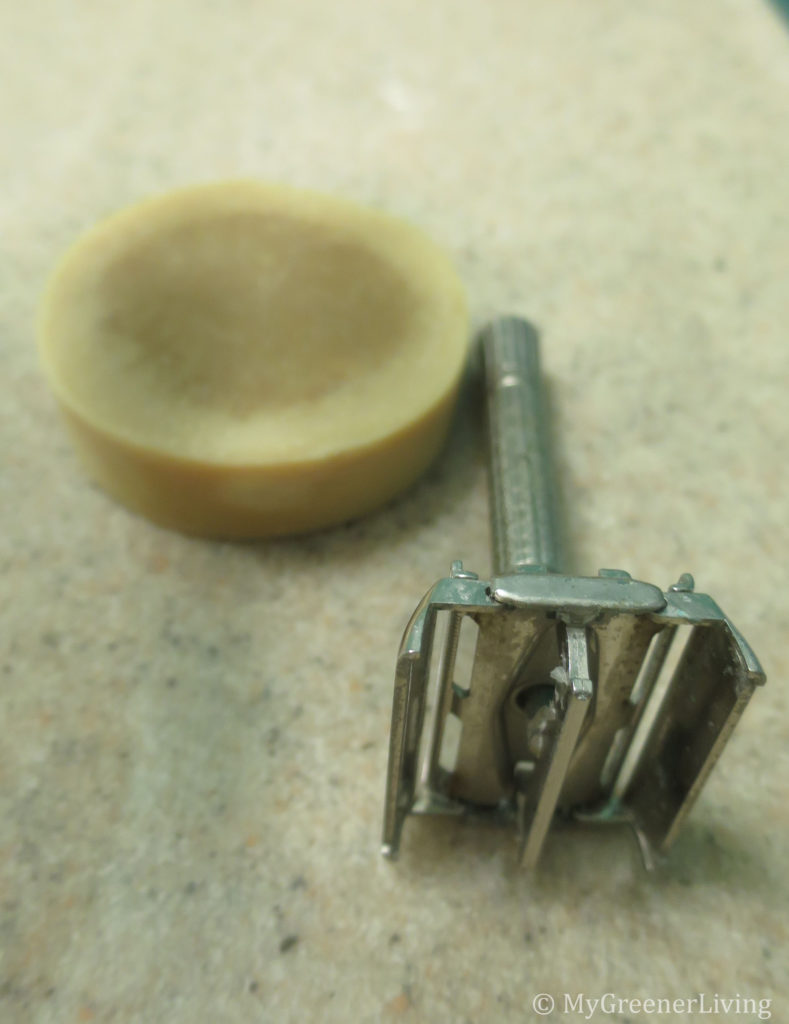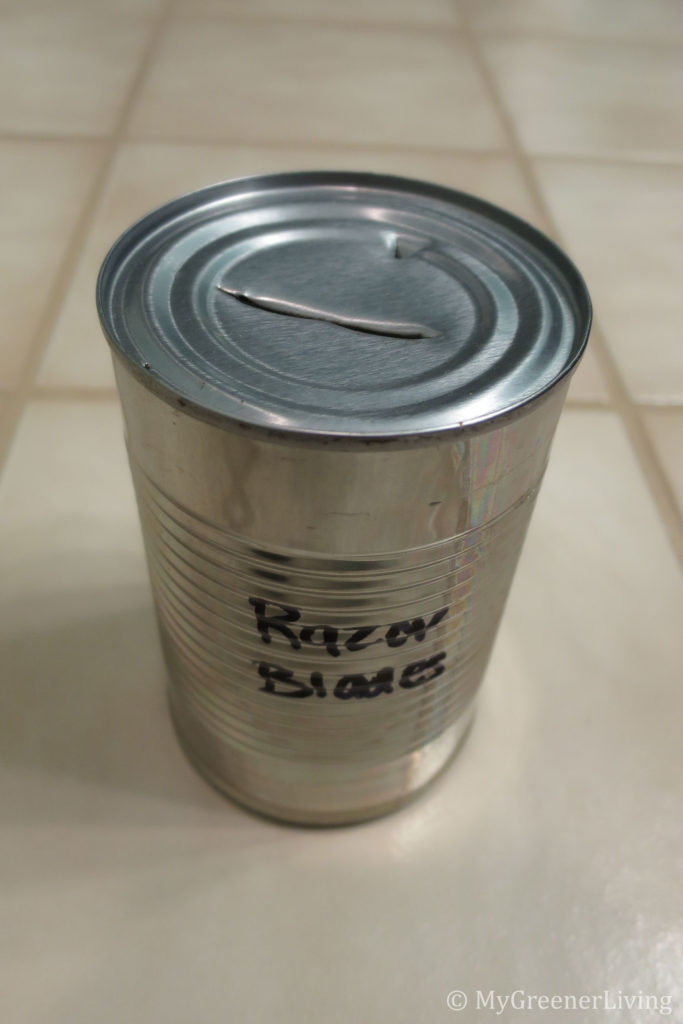One of my earliest posts talked about my laundry detergent recipe. It’s about time I shared my tips for drying laundry more naturally – in a more environmentally (and clothes) friendly way!
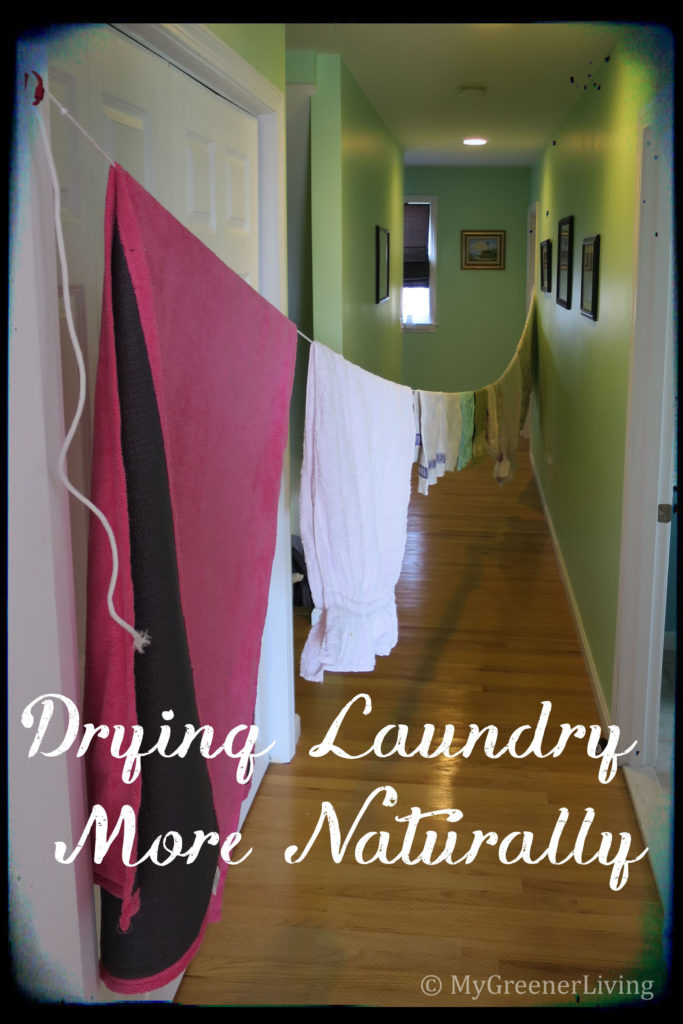
Disclaimer: This post contains affiliate links. See my Disclosure Policy for more information.
Line Drying
The most environmentally friendly way to dry clothing and linens is to line dry. This requires no energy and no special products. I hang dry most of my shirts, sweaters, and jackets on their hangers. Other clothing can be draped over doors, shower doors or shower curtain rods, or you can purchase clothes line for less than $10.
I have a long hallway in my house adjacent to the laundry closet. A length of clothes line tied between door hinges on opposite sides of the hallway made a great space for drying laundry more naturally. I use this to dry sheets, towels, and some clothes. In the summer, I hang these items over my deck railing or on a clothes line strung across my hammock stand.
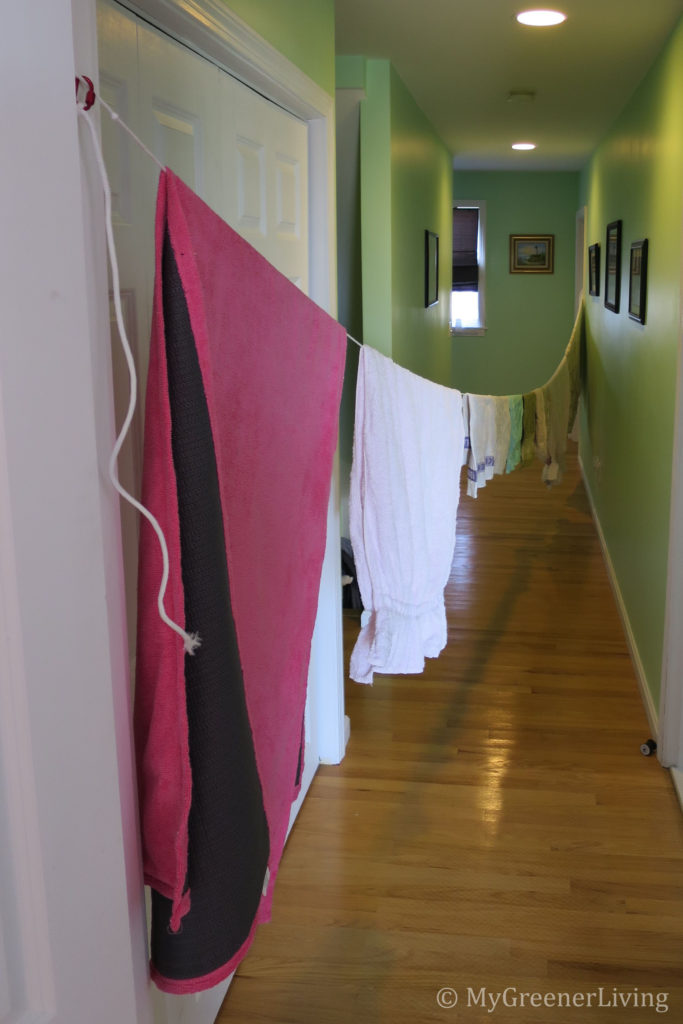
Dryer Drying
For heavy items that take a long time to dry such as my bed quilt or jeans, or when I just don’t have time to air dry my laundry, I still use my clothes dryer. I dry my clothes on low heat both to save energy and to protect my clothes from heat damage and shrinking.
Anti-Static & Faster Drying
I found a method for drying laundry more naturally that still reduced static. Instead of using chemical-laden dryer sheets for anti-static, in each load of laundry I also put in the drier an old wash cloth with safety pins in the corners. The safety pins in the wash cloth help to dissipate static each time they come in contact with the metal dryer walls. I also toss in a few tennis balls, each tied in their own old sock (to prevent color transfer onto the drying clothes). The tennis balls help to move the clothing around in the dryer and prevent it from all being “glued” to the dryer drum, so clothes dries faster.
Caution: It was recently brought to my attention that tennis balls contain latex. I recommend that you do not use tennis balls in your dryer IF you or anyone whose clothing or linens are being dried in the drier has a latex allergy due to the unknown effects that this may have.

Tried and retired anti-static attempts
Dryer sheets
I used to use dryer sheets. I initially sought out a replacement because I wanted to be able to dry my clothes without producing any waste. As I researched, I learned that dryer sheets ruin the moisture-wicking properties of some clothing, because they essentially coat all fabric with a waxy coating. Dryer sheets also coat the screen on the dryer lint catcher with wax. This can interfere with the heat exhausting from the dryer, increasing the temperature in the dryer and causing longer dry times as moisture has a harder time escaping through the vent.
Aluminum foil ball
Crumpling up a ball of aluminum foil and tossing it in the dryer will help to reduce static, and is an effective method for drying laundry more naturally. Similar to the metal of the safety pins, the foil ball attracts static from the cloths and dissipates it against the dryer wall. However, I found that the foil ball got too smooth within 1-2 washes, and then became ineffective. I didn’t like needing to dispose of the foil (I recycled it) so frequently, so I tossed this trick.
Wool Dryer Ball
I have heard that wool dryer balls are very effective at reducing static in clothing dried in a clothes dryer. While it is supposedly a great method for drying laundry more naturally, I am allergic to wool and did not want my clothes or myself to be in contact with wool on a weekly basis, so I have never tried it.
Clothing Materials and Dryer Lint
As much as I try to reduce waste drying clothes, there is always some waste with machine drying: lint. If the contents of the dryer are all organic materials (cotton, linen, bamboo), I collect the lint and throw it in my compost. If I have synthetic fabrics (polyester), I throw the lint in the garbage.
Note: I have successfully dried many, many loads of laundry using these tricks. I have found no indication of damage to the dryer or clothing, but I assume no responsibility if it doesn’t work out for you.
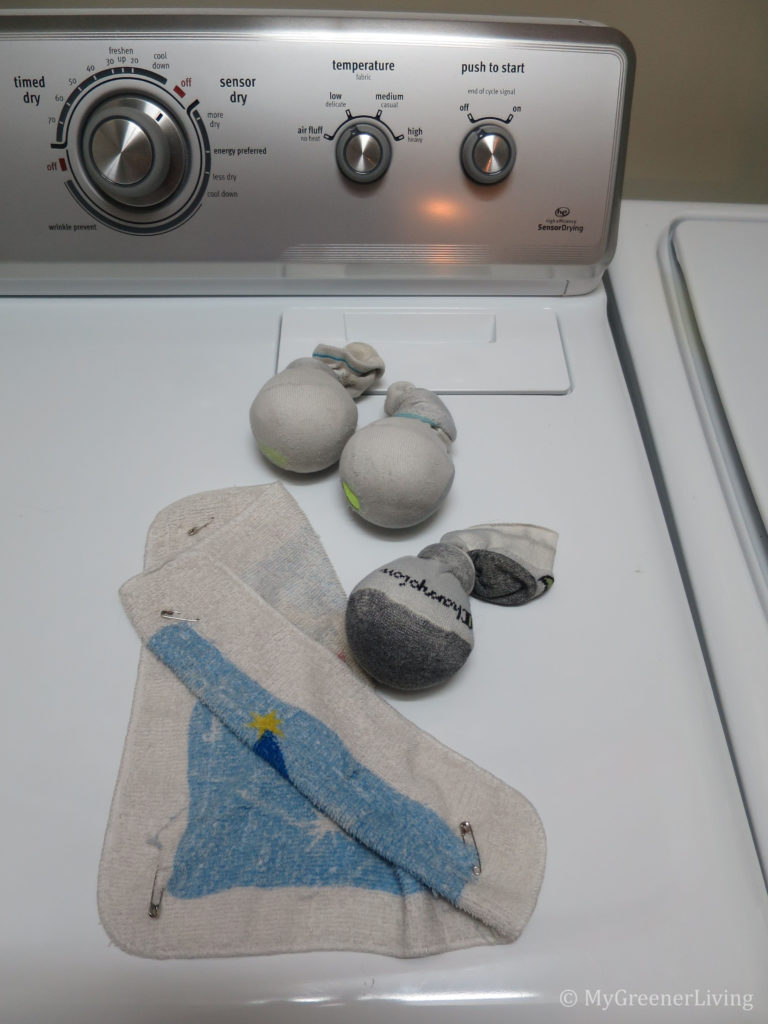
Do you have any green laundry tips? Please share in the comments!


